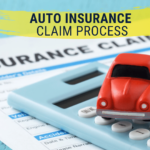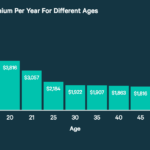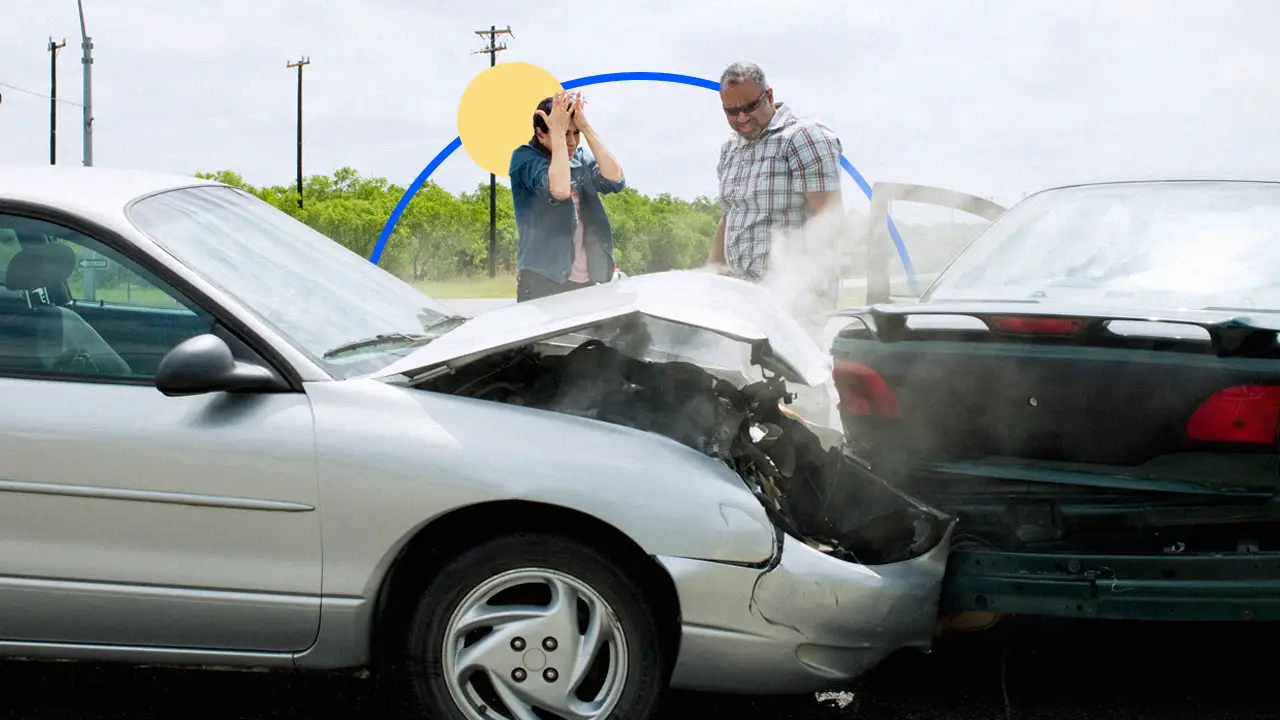When it comes to choosing bus insurance, one of the first opinions you’ll face is whether to go with state minimum content or full content. Each option comes with its own set of pros and cons, and the right choice depends on factors like your auto’s value, your driving habits, your budget, and your fiscal situation.
In this composition, we’ll break down the crucial differences between state minimum and full content bus insurance, explain what each option includes, and help you decide which type of content is best suited to your requirements.
What Is State Minimum Auto Insurance?
State minimal bus insurance refers to the minimal quantum of insurance content needed by law in your state. While the exact conditions vary from state to state, the primary thing of state minimum content is to insure that motorists have enough insurance to cover the costs of damages or injuries they beget to others in an accident.
State minimum content generally includes
Liability Insurance This is the main element of state minimum content. It pays for damages or injuries you beget to others in an accident where you’re at fault. There are generally two types of liability insurance
Bodily Injury Liability( BIL) Covers medical costs, lost stipend, and other charges for the other motorist and passengers if you’re at fault.
Property Damage Liability( PDL) Pays for the form or relief of another person’s property( like their auto or a hedge) that you damage in an accident.
While liability insurance covers damages and injuries to others, it does n’t pay for your own medical bills or repairs to your vehicle if you’re involved in a crash. It also generally does n’t covernon-collision events like theft, vandalization, or rainfall- related damage.
What Is Full Coverage Auto Insurance?
Full content bus insurance goes beyond the minimal conditions set by your state. It includes a combination of different types of content, designed to give further comprehensive protection for both you and other motorists in a wider range of situations. While full content varies by insurer and policy, it generally includes
Liability Insurance As mentioned before, this is a crucial part of full content and is needed by law in utmost countries. It covers damage or injury to others when you’re at fault.
Collision Coverage Pays for damage to your vehicle if you’re involved in a collision, anyhow of who’s at fault. This can include accidents with another auto, hitting a stationary object, or indeed a single- auto rollover.
Comprehensive Coverage Coversnon-collision-related damage to your vehicle, similar as theft, vandalization, damage from rainfall( like hail or flooding), beast collisions( e.g., hitting a deer), or fire.
Medical Payments or particular Injury Protection( PIP) These cover medical bills for you and your passengers, anyhow of fault in an accident. PIP is obligatory in some countries, while in others, it’s an voluntary addition to your policy.
Uninsured/ Underinsured Automobilist Coverage Protects you if you’re in an accident caused by someone who does n’t have enough insurance to cover your medical charges or property damage.
Basically, full content provides a much broader range of protection, covering both your own damages and those caused to others in further situations than state minimum content.
crucial Differences Between State Minimum and Full Coverage Auto Insurance
To make a clear comparison, let’s break down the main differences between state minimum and full content bus insurance
Factor State Minimum Coverage Full Coverage Auto Insurance
What It Covers Only the minimal liability for injuries and property damage you beget to others. Covers both your own vehicle and liability for damage to others, including collision and comprehensive content.
needed by Law Yes, in utmost countries( minimal liability). No, it’s voluntary, but may be needed by lenders if you finance or lease your auto.
Cost Lower decorations. Advanced decorations due to more expansive content.
Bodily Injury Coverage Yes, but only for the other party in the accident. Yes, but includes content for your own medical bills( through PIP or medical payments).
Property Damage Coverage Yes, but only for the other party’s property. Yes, covers both the other party’s property and your own vehicle.
Vehicle Damage Not covered( unless the other motorist is at fault and has insurance). Covers your vehicle’s damage, including theft, vandalization, and accidents.
Non-Collision Incidents Not covered( e.g., rainfall, theft). Covers theft, vandalization, beast collisions, rainfall- related damage, and more.
Ideal For motorists with aged buses or those on a tight budget who want to meet legal conditions. motorists with newer or further precious vehicles who want full protection.
threat of eschewal- of- Pocket Costs Advanced, as you’re responsible for your own vehicle damage and medical bills. Lower, as the policy covers utmost of your own damages, medical bills, and liability costs.
When Should You Choose State Minimum Coverage?
State minimum content might be the right choice if
Your auto is aged or has a low request value If your auto is worth lower than the cost of your decorations, concluding for full content may not be cost- effective.However, the insurance payout may be lower than what you’ve paid in decorations over time, If it gets damaged or totaled. In this case, state minimum content might be enough to cover you fairly without spending too much on insurance.
You’re on a tight budget If you’re looking to save plutocrat on your bus insurance decorations, state minimum content is the most affordable option. It satisfies legal conditions and provides some fiscal protection for damage or injuries you beget to others.
You enjoy your auto outright If you enjoy an aged vehicle and are n’t upset about the implicit cost of replacing or repairing it, state minimal content might serve, as you’re not needed to carry full content by a lender.
still, keep in mind that state minimum content leaves you financially vulnerable if you beget an accident and your damages or medical bills exceed the limits of your policy. It also does n’t give protection for your own vehicle if it’s damaged or stolen.
When Should You Choose Full Coverage?
Full content might be the right choice if
You have a newer or further precious vehicle If your auto is worth a significant quantum, full content is generally the better option. Collision and comprehensive content will help you repair or replace your auto if it’s damaged or totaled, guarding your investment.
You want peace of mind Full content offers expansive protection, including content for damage to your vehicle, medical bills, and protection against uninsured or underinsured motorists.However, full content is the way to go, If you want to minimize out- of- fund costs and have the most comprehensive content.
You’re backing or leasing your vehicle If you’re making payments on a auto loan or parcel, your lender or leasing company may bear you to carry full content. This ensures that the lender is defended in case of an accident or damage to the vehicle.
You want content fornon-collision incidents Full content also protects you againstnon-collision-related pitfalls like theft, vandalization, and rainfall damage, which can give lesser fiscal security in case commodity unanticipated happens.
While full content costs more in decorations, it can be a worthwhile investment, especially for motorists with new buses , significant means, or a desire for complete protection.
Factors to Consider Before Choosing
Your Auto’s Value The newer and more precious your auto, the more likely you should consider full coverage.However, state minimum content may be enough, If your auto is old and has little resale value.
Your Budget Full content is more precious, so consider whether you can go the advanced decorations. still, weigh that cost against the eventuality out- of- fund costs if you do n’t have full content and end up demanding expansive repairs.
Your Driving Habits If you drive constantly or by high- business areas, the threat of accidents increases, making full content a better option.However, state minimum content may be sufficient, If you drive rarely or substantially in low- threat areas.
Your Financial Situation If you’re financially stable and can go to pay for vehicle repairs or medical bills out of fund, state minimum content could work. still, if a significant expenditure would strain your finances, full content can offer lesser protection and peace of mind.
Conclusion Which Is Right for You?
Eventually, the decision between state minimum and full content bus insurance comes down to your individual circumstances.
State minimum content is stylish for those looking for the most affordable option, especially if they’ve an aged auto, do n’t drive constantly, or are on a tight budget.
Full content is ideal for motorists with newer or further precious vehicles, those who want redundant protection, or those who are financing or leasing their auto.
Before making a decision, precisely consider the value of your auto, your driving habits, your budget, and your forbearance for threat. And flash back , indeed if you’re needed to carry state minimal insurance, you can always choose to add further content to more cover yourself. Always review your policy periodically to insure that it meets your changing requirements.









